Home > Article > Web Front-end > Analysis of node module and npm package management tool
In Node.js, all functions are divided into modules and a complete module loading mechanism is provided, so we can divide the application into different parts and coordinate these parts well. manage. By writing various reusable codes in various modules, the amount of code in the application can be greatly reduced, the development efficiency of the application and the readability of the application code can be improved. Through the module loading mechanism, various third-party modules can be introduced into our applications. This article mainly introduces the node module and npm package management tool. The editor thinks it is quite good, so I will share it with you now and give it as a reference. Let’s follow the editor to take a look, I hope it can help everyone.
In node.js, npm package management tool is provided for downloading various Node.js packages from third-party websites.
1. Module
1.1 Loading the module
In Node.js, all functions are divided into modules. , a Node.js application consists of a large number of modules, each module is a JavaScript file, to load the core module predefined in node.js, we only need require ('module name'), for example require ('http '), when introducing a third-party class library into our application, we need to specify the full path and file name of the file, such as require('./script/foo.js')
1.2 Accessing the module
1.2.1 Using the exports object to access
The variables, functions or objects defined in a module file are only valid within the module. When you need to reference these variables, functions or objects from an external module, you need to change the module. For example, create a testModule.js with the following code:
var testVar = "Can you see me now ? ";
var funName = function(name){
console.log('My name is' + name);
}
exports.testVar = testVar ;
exports.funName = funName ;Then we think To use these variables, functions or objects in http.js, you can write the following code in http.js:
var test1 = require('./testModule.js'); // 通过test1访问testModule.js模块内的testVar变量 和funName函数 console.log(test1.testVar) test1.funName('Luckfine')
node Run this http.js node http.js
The running results are as follows

##1.2.2 Use the module.exports object to access
When you need to reference these variables, functions or objects from an external module, use the exports object or module.exports. However, when you need to define a class for the module, you can only use module.exports. For example, define a testModule class with the following code in testModule.js:var _name,_age
var name = '',age = 0;
var foo = function(name,age){
_name = name ;
_age = age ;
}
// 获取私有变量_name的变量只
foo.prototype.GetName = function(name){
return _name;
};
// 设置私有变量_name的变量值
foo.prototype.SetName = function(name){
_name = name;
}
// 获取私有变量_age的变量只
foo.prototype.GetAge = function(age){
return _age;
};
// 设置私有变量_name的变量值
foo.prototype.SetAge = function(age){
_age = age;
}
foo.prototype.name = name;
foo.prototype.age = age;
module.exports = foo; Then we want to use the variables of this class in http.js, For functions or objects, you can write the following code in http.js:
var foo = require('./testModule.js'); var myFoo = new foo('Luckfine',18); console.log('获取修改前的私有变量值') console.log(myFoo.GetName()); console.log(myFoo.GetAge()); console.log('修改私有变量'); myFoo.SetName('Baby'); myFoo.SetAge(16); console.log('获取修改后的私有变量值') console.log(myFoo.GetName()); console.log(myFoo.GetAge()); console.log('获取修改前的公有变量值') console.log(myFoo.name); console.log(myFoo.age); console.log('修改公有变量') myFoo.name = "Tom"; myFoo.age = 20; console.log('获取修改后的公有变量值') console.log(myFoo.name); console.log(myFoo.age);Then run the node http.js command in iTerm, and the running result is as follows
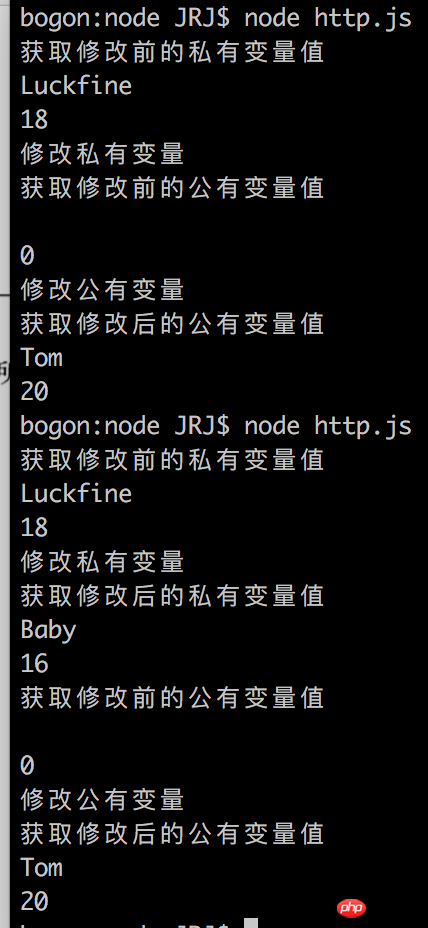
1) A certain A js file provides functions for others to use. Just expose the function; exports.msg=msg;
2) A certain js file describes a class. module.exports = People;
2. npm package management
npm is a package management tool that follows Node.js and can solve the problems of Node.js code deployment There are many problems. When we use npm to install some third-party libraries, the installation package will be placed in the node_modules folder in the directory where the npm command is run. If there is no node_modules in the current directory, the node_modules directory will be generated in the current directory. , and put the third-party libraries we need in node_modules. So when installing, pay attention to the location of the command prompt. Command to install third-party libraries npm install module name, if we need to install express, then we only need to enter npm install express1 on the command line. Our dependent packages may be installed at any time Update, we always want to keep it updated, or maintain a certain version;2. When the project gets bigger and bigger, there is no need to share the third-party modules we reference again when showing it to others.
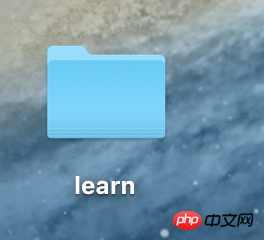
We now need to install a third-party library express. First, enter this folder, open the command line, and enter npm install express'' here. After the command line is completed, we will see that a new one is created in the folder. node_modules folder, and the libraries we need have been installed in the folder

2. After installation, the contents of the folder
Then we If you need a package.json to manage our packages, you can enter npm init on the command line. At this time, you can answer the questions according to the prompts on the command line to create package.json
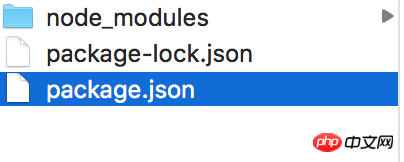
3. Create package.json
Then some dependencies, version numbers, descriptions, authors, etc. of our project can be managed accordingly through package.json.
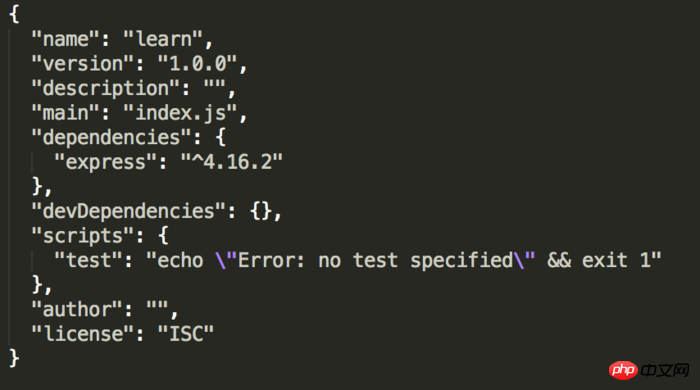


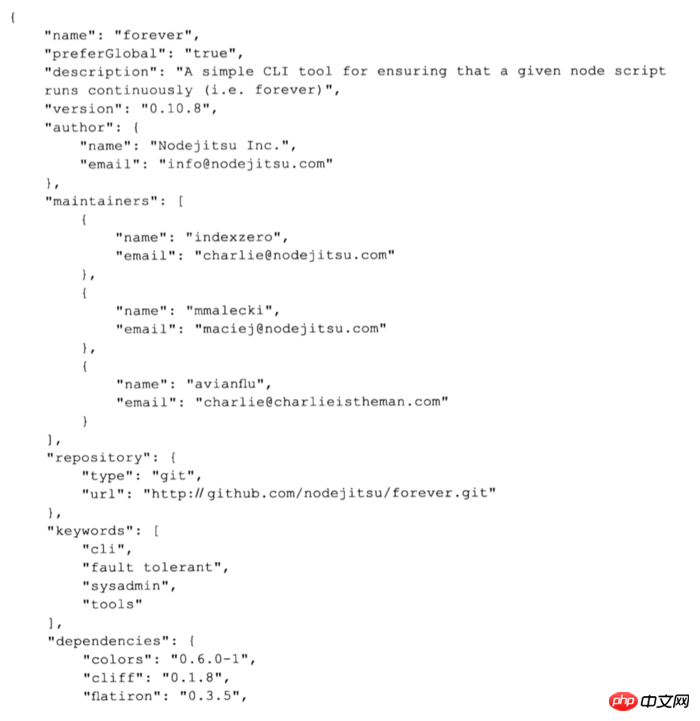
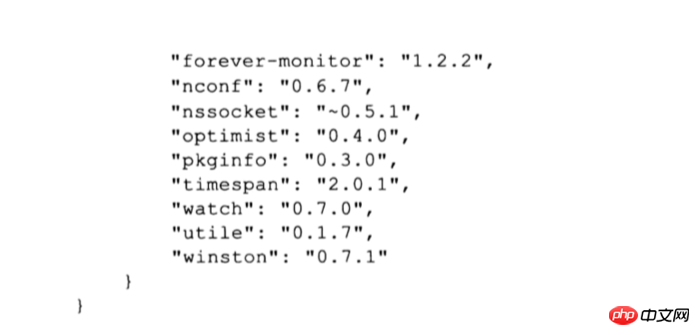
This serves as a deeper understanding.
Inside the module file, you can access the following attributes of the current module.
module.id: Indicates the absolute path of the module file.
module.filename: The attribute value is the file name of the current module
module.loaded: The attribute value is a Boolean value. When the attribute value is false, it means that the module has not been loaded, otherwise it means that it has been loaded. .
module.parent: The attribute value is the parent module object of the current module, that is, the module object that calls the current module.
module.children: The attribute value is an array, which stores all the children of the current module. Module objects, that is, all module objects loaded in the current module.
Related recommendations:
The above is the detailed content of Analysis of node module and npm package management tool. For more information, please follow other related articles on the PHP Chinese website!